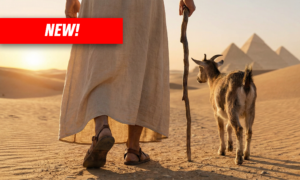Part 1 | The Haftorah History
To introduce the topic to the uninitiated, this section contains sources that explain the origins of Torah reading and the Haftorah. Moses enacted a thrice-weekly Torah reading. As the Talmud explains, a person should not spend three days without reading from the Torah. In the Hasmonean Era, Torah readings were forbidden, so they were substituted with segments of the Prophets which resembled the weekly Torah portion.
Part 2 | The Songs of the Women
The sources in this section set the table for the Rebbe’s question. This week’s Torah portion focuses on the Splitting of the Sea. Afterwards, Moses and the men broke out in song, followed by Miriam and the women. This week’s Haftorah is the Song of Deborah, despite many other songs being recorded in the bible.
The Rebbe cites the question of the Alter Rebbe: Why was the Song of Deborah—a woman—chosen over the Song of King David? The Alter Rebbe answers that at the Splitting of the Sea, the women rejoiced more than the men because they experienced the Egyptian subjugation in a more profound way, due to the fact that much of the persecution focused on children. (Some more sources are included to drive home that point).
This section ends with a general overview of the Rebbe’s view of a women’s place in Judaism, and a story about a women’s Torah class that began on the Rebbe’s initiative.
Part 3 | Which Song Deserves a Title?
In this section, the Rebbe speaks about the name of the Shabbat: Why is this Shabbat called Shabbat Shira, as opposed to the week of the Haazinu reading? The answer brings us back the same point: It is the women’s song that is most significant.
You can conclude your class with a video My Encounter with Mrs. Susan Handleman that encapsulates the Rebbe’s view on this topic. Click here: Chabad.org/574988
*This class is comprised of two separate Sichos, one in part 2 and the other in part 3.






